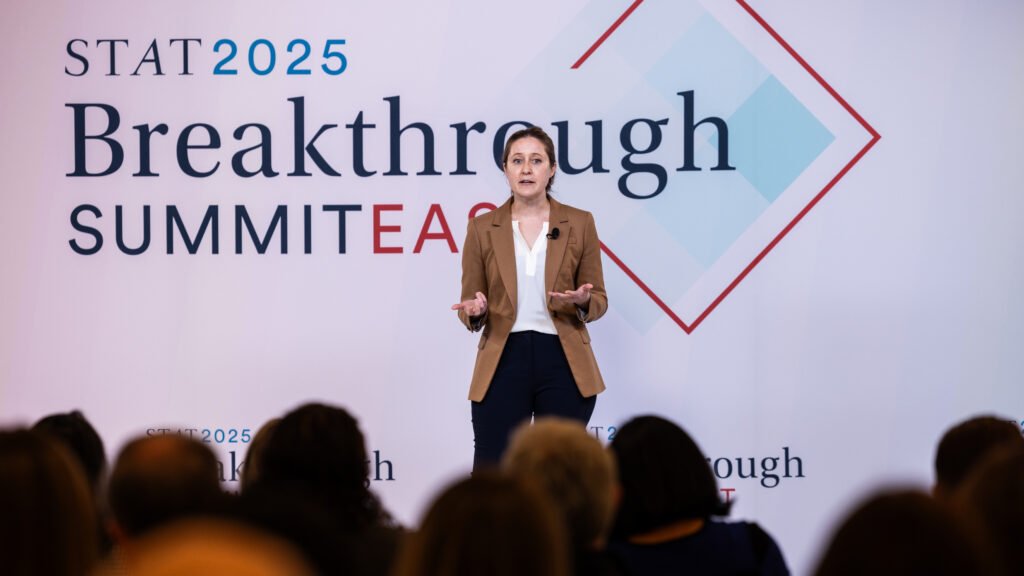The STAT Madness pitch session at the STAT Breakthrough Summit East in Manhattan brought together some of the brightest minds in scientific research to showcase their groundbreaking discoveries. Similar to the popular TV show “Shark Tank,” four teams presented their research to a panel of judges and a captivated audience.
One standout team from the live pitch panel was the New York University School of Global Public Health team, currently a contender in the Elite Eight of the STAT Madness competition. Their research focused on why Hispanic patients are at a higher risk of dying from respiratory failure compared to other patients. The team discovered that Hispanic patients were more likely to receive deep sedation in the ICU, which is associated with adverse outcomes. By de-implementing this low-value practice, they believe they can save lives and improve patient outcomes.
Another team, led by Justin Jee from Memorial Sloan Kettering Cancer Center, used natural language processing to extract data on cancer patients’ demographics and outcomes from electronic medical records, leading to new insights for clinical trials. Wenbin Mei from Rockefeller University presented research on how the PCSK9 gene may impact cancer metastasis, potentially paving the way for new breast cancer therapies. Additionally, Kim Mudd from Johns Hopkins shared her team’s research on an antibody treatment that showed promising results in desensitizing patients with food allergies.
The live pitch event showcased the diversity and innovation in scientific research, highlighting the potential for impactful discoveries in healthcare and medicine. The judges, including representatives from Cure and JobsOhio, were impressed by the teams’ dedication to advancing scientific knowledge and improving patient care. The audience was engaged and inspired by the groundbreaking research presented, underscoring the importance of supporting and celebrating scientific innovation.
As the STAT Madness competition continues, these teams and their research serve as a reminder of the incredible work being done in the field of health and medicine. By collaborating, innovating, and pushing the boundaries of scientific discovery, these researchers are shaping the future of healthcare and making a difference in the lives of patients worldwide. Scientific research has always been crucial for the advancement of society, but in today’s world, it is more important than ever. With the recent decrease in funding for science by the federal government, the visibility of scientific research has become a key factor in promoting its significance. This was a recurring theme throughout the day at the STAT Breakthrough Summit, where speakers emphasized the need to make science more relatable to everyday life.
Melissa Dupont, the global public affairs lead for neurology at Sanofi, highlighted the importance of bridging the gap between science and the general public. She emphasized the need to move away from the traditional image of science being confined to laboratories and instead, make it more connected to the lives of ordinary people. This shift in perspective is essential for fostering a greater appreciation and understanding of scientific research.
One initiative that aims to make science more accessible and engaging is STAT Madness. While the competition may not offer a tangible prize, it provides researchers with a platform to showcase their work and gain recognition within the scientific community. By encouraging people to vote for their favorite research projects, STAT Madness helps to promote the visibility of cutting-edge scientific discoveries.
One specific example cited during the summit was the potential benefits of omalizumab for toddlers and college-age students. This medication could be particularly beneficial for toddlers who have a tendency to eat anything handed to them, as well as college students who may be living on their own for the first time. By highlighting these practical applications of scientific research, the importance of ongoing scientific advancements becomes more apparent to the general public.
As the landscape of scientific funding continues to evolve, it is essential that researchers and advocates find innovative ways to promote the value of scientific research. By making science more relatable and accessible to everyone, we can ensure that the crucial work being done in laboratories around the world has a lasting impact on society as a whole. So, let’s continue to support initiatives like STAT Madness and strive to make science a part of everyday life for people of all ages.


